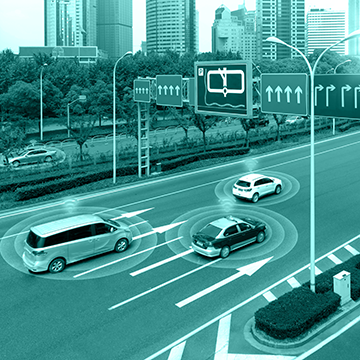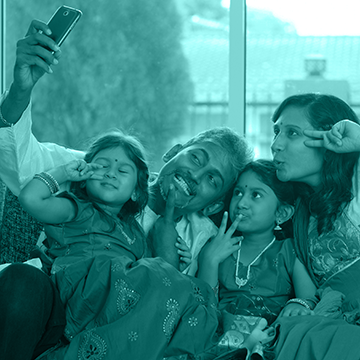Convergence
Convergence of propositions and connectivity alike are revolutionising the TMT market
Our Expertise
At RDC, we have decades of combined experience in the telecoms industry. Convergence plays a vital part in the future of the industry. We’ve been here from the very beginning, and we are ready for what the future will bring.
We help our clients by developing disruptive convergence and pricing strategies to ensure customer stickiness and sustained service delivery. Having worked with companies like, Colt we have experience designing unified communications roadmaps.
What is convergence?
The first idea that comes to mind when discussing telecoms convergence is the integration of multiple forms of communication. This includes voice, pay-TV, and fixed broadband. Better described as bundling, this is just one part of convergence and is usually accompanied by a price break. In this instance, convergence can be used to force consumers into adopting bundled services even if they only wanted one of them.
Bundling has allowed CSPs (Communication Service Providers) to offer a more efficient and streamlined experience for the user. For the provider, this can be a means to reach to a wider pool of subscribers, and upsell its services and products, differentiating itself from competitors with fewer services to offer. Converged offerings in this sense only relate to retail, not the underlying network technology.
Network convergence is where distinctions between mobile and fixed broadband disappear and users experience seamless connectivity at home and away. Network convergence is purchased as a single service from a single carrier for a single price.
This vision of convergence has been at the forefront of the telecoms market for years. However, we are just now beginning to make the technological advancements necessary for true convergence. 5G technology is driving the convergence of various industries such as IoT, automotive, healthcare- the list goes on.
Convergence can also be thought of in terms of bringing different digital services or industries into one. This diversifies the way in which telcos reach new consumers and generate revenues. For example, CSPs moving into content production rather than solely being carriers for pay-TV companies.
Convergence trends to watch
As more of the world become digitised, the opportunities to add value on top of connectivity grow. Beyond the previously mentioned examples, we believe the deployment of 5G technology and the growing popularity of IoT devices are opening new possibilities for CSPs in convergence.
5G and Wi-Fi convergence
Unlike past generations of wireless, Wi-Fi 6 and 5G are designed to work together smoothly. For consumers, roaming from Wi-Fi to cellular and back without ever changing a setting offers a simple, seamless wireless experience. For enterprises and industry looking to fill coverage caps and support mission-critical connectivity, the use cases become even more compelling. With convergence, enterprises will have seamless handovers between cellular and Wi-Fi with greater resilience. For example, robots and autonomous vehicles in smart factories could have network redundancies to ensure they’re always connected and safely under control, even in areas with dead spots.
Industry groups and standard setters have already taken steps to advance convergence for these and other use cases. In Release 15 of the 5G specification, for example, 3GPP defines mechanisms to allow Wi-Fi-based access networks to integrate onto the 5G network in both a trusted (via SIM authentication) or untrusted format.
Consumer IoT
CSPs already provide fixed and mobile broadband access in and out of the home for use by IoT devices. Through convergence with their existing platforms, CSPs can leverage their technical and business expertise to develop a new and lucrative revenue source. They are also given the additional benefit of displacing third-party IoT providers that rely on CSP connectivity.
Many telecom service providers have already started developing IoT-based services and products to satisfy the needs of customers. Services include various vertical markets including IoT connectivity services, data storage and management, data analytics and device monitoring.
For example, Telefonica has leveraged its global presence to develop a one-stop shop for IoT. It has focused it’s efforts in South America to gain first-mover advantage. Telefónica’s solutions and services are based on five main areas (mobility management, industry 5.0, utilities, eco solutions and smart spaces), all supported by a portfolio of Big Data capabilities including multi-cloud infrastructure, a rich set of data tools and data-driven analysis.
What are the benefits of convergence?
A convergence strategy can help telcos future-proof the business against commoditisation. In business, commoditisation is the process by which goods or services that are distinguishable in terms of quality or brand become identical or interchangeable in the eyes of the consumers. For example, there is no difference in electricity suppliers; consumers choose the cheapest one. The main effect of commoditisation is that manufacturers and brand owners pricing power becomes weaker.
Convergence an opportunity to avoid the price-based race to the bottom. If a telco can offer a positive network experience and a reasonable price, as well as other digital services, customers will remain loyal.
What are the convergence options?
Bundling of services: the triple and quad-play operators
Bundling is the first convergence option for telecoms. Dual, triple and quad-play operators have led the market for many years. Bundling has proven an effective strategy to offer more value to customers whilst mitigating churn and maximising CLV (customer lifetime value). For consumers, bundling is attractive because of its convenience and the opportunity to get multiple services cheaper than buying them individually. Some operators require bundled offers for certain services, such as pay-TV, especially if the operator has popular and exclusive content.
However, as more operators adopt bundling strategies differentiation along with the benefits it holds inevitably diminish. This results in operators continually evolving their bundling strategies to stay relevant. A possible solution is content, leveraging OTT partnerships with video services such as Netflix or BT Sports.
Content production: a new type of convergence
As telecoms services (mobile voice or fixed broadband) become less differentiated across operators, content has quickly become the star of convergence strategies.
This can mean owning a content segment, such as Telefonica’s exclusive football rights in Spain, or partnerships with OTTs (a cheaper and more popular option). Telcos can be very valuable partners to OTTs, either through their billing relationship with the customer or as a trusted partner in regions were direct customer acquisition is more difficult.
Partnering with OTTs could become even more attractive as the number of VoD platforms increase and consumers are not willing to pay for 5+ services to see their favourite shows.
Converging with services outside telecom
One of the drawbacks of convergence for operators is the risk of cannibalising their own revenues by bundling at a lower cost or sharing revenues with competitors. A possible solution is to offer services beyond traditional products from CSPs. For example, O2’s Priority loyalty programme gives customers rewards, such as extra airtime credit or discounted concert tickets.
Operators are looking to enrich CSP’s technical knowledge by exploring supporting services. For example. , Orange is placing cybersecurity at the forefront of its growth strategy. Orange differentiates itself from other cybersecurity players because it is able to deliver solutions on a technical level whilst leveraging its telecoms infrastructure to provider a broader and more extensive service.
Unfortunately, not all ventures into digital services will be successful. Vodafone UK’s partnership with gaming app Hatch is a prime example. Hatch – a subsidiary within Angry Birds gaming company Rovio – closed its 5G cloud gaming service at the end of 2020. The app provided mobile games on-demand . In 2019, Hatch had signed agreements with various operators, including Vodafone UK to offer customers a few months of free access, with promotions highlighting the operators’ new 5G networks as perfect for cloud gaming. However, cloud gaming is going through its own struggles, as suggested by Google shutting down Stadia in February 2022, so this should act as a cautionary tale to approach convergence with a measured strategy and select the right industries to converge with.
Get In touch
If you have a requirement you would like to tell us about request a call back below




























